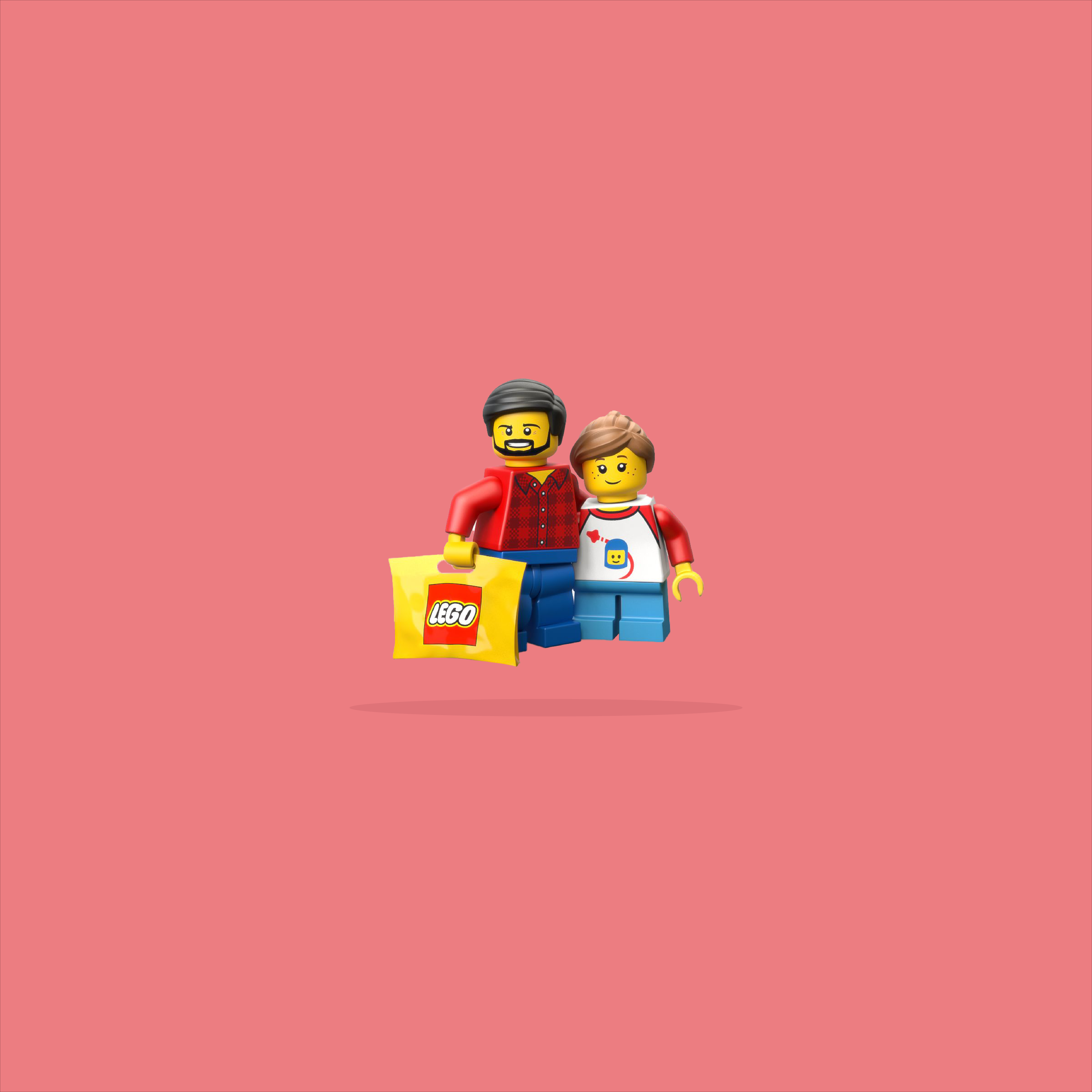Our websites use cookies. By continuing, we assume your permission to deploy cookies as detailed in our Privacy Policy.
Your Shipping Strategy Can Increase Repeat Orders and Cut Costs with Tash Jones from SmartFreight
This is the last episode of the first series of the eCommerce Growth Show. In this series, we’re joined by eCommerce experts for their views on what we can do together to improve both engagement and conversion rates for eCommerce brands.
We’re wrapping up this series with a topic no eCommerce retailer can avoid. In this episode, we chat with Tash Jones from SmartFreight about how by getting clever and using a carrier management solution you can both save costs and increase sales. Saving costs by automating tasks to reduce the load on your customer service team, and making sure every parcel is shipped the right way. Increasing sales by easily improving customer experience post purchase so they buy again, plus giving the customer more choice when they place their order.
Welcome to the eCommerce Growth Show brought to you by Segmentify, the fast, lean, learning machine. The fastest learning, most revenue generating personalisation platform for eCommerce.
Chloe Thomas:
Hello. Well, please don’t cry, but this is the last episode of this inaugural series of the eCommerce Growth Show. In this series, we’ve been focusing on what you as a retailer need to know about to grow your business in 2020. All six episodes are now available to you via your podcast app of choice, be that Apple podcast, Spotify, Podcast Addict or whatever it is you’re choosing to listen on. And you can find details of the whole series and the transcripts of every single episode at segmentify.com/podcast.
Chloe Thomas:
Now we would love to hear what you think of the series. The best way to let us know is to submit a review via your podcast app. We keep a particularly close eye on Apple Podcasts and Spotify, so please do send us a review, and maybe let us know what you’d like a future series to focus on.
Chloe Thomas:
We are wrapping up this series with a topic no eCommerce retailer can avoid. Whether it’s your first day trading or you’re doing 1000s of orders a day, you have to get the parcel to the customer. And there are now a lot of ways you can turn that whole strategy into a great customer experience and reduce your costs. And I’m Chloe Thomas, host of the eCommerce Masterplan podcast, bestselling author of multiple books on eCommerce and the cohost of this show as well as if you haven’t worked that out by now. Okay. So I’m joined on every episode of this series by Phill Kay from Segmentify. Hello, Phill.
Phill Kay:
Hey Chloe. How are you doing?
Chloe Thomas:
I’m all right, I’m good. I’m excited to be here for our final episode of the series. So why did you want to include Tash and SmartFreight in this series?
Phill Kay:
I mean, this whole series has all been about customer lifetime value at the end of the day. Then the whole of the customer journey from the very beginning to the very end of the process. And what we’ve tried to do really is lay these podcasts out in kind of a loose way in terms of that customer journey. So obviously website, personalisation, marketing, payments, back office, and then, of course, you’ve got to get the stuff to the customer. So shipping obviously is a massive part of that customer journey. And so I thought it’d be really great to get Tash from SmartFreight on to tell us a little bit more about the best ways that you can devise your strategies around shipping for that part of the customer journey.
Chloe Thomas:
Well, guys, that’s what you’re going to be getting in this episode. Lots on your shipping strategy, lots on how it can help you increase your sales. And we’re talking about a lot of automation, a lot of cost savings coming up. I learned quite a few new things in this, and I’m a bit of a shipping geek, so that was kind of cool. So I think you’re going to like this one. So Phill, should we get our guest on?
Phill Kay:
Absolutely. Let’s do it.
Chloe Thomas:
It’s time to welcome our guest. Tash Jones is the European Channel Manager at SmartFreight. SmartFreight Solution puts you, yes you out there listening, the retailer, in control of your shipping needs. Picking from thousands of possible providers and rates and giving you full control as the parcel leaves your warehouse and travels to your customer. They’ve been doing this since 1997, so it’s fair to say SmartFreight really know their shipping. Hello, Tash.
Natasha Jones:
Hi Chloe. How are you doing?
Chloe Thomas:
I’m good, very excited. As some of the listeners may know, shipping is quite close to my heart, so I’m really looking forward to chatting to you about it today, and Phill’s around here somewhere as well.
Phill Kay:
I am. Hi Tash. How are you doing?
Natasha Jones:
Hi Phill, not bad. Thank you. How are you?
Phill Kay:
Yeah, I’m good. Thank you. I’m good. So yeah, thanks so much for coming on this podcast today. Tell us, I mean, just a bit of an opening question, really. What’s the most kind of memorable thing that’s happened to you since working SmartFreight?
Natasha Jones:
Well, it has been quite a few memorable things. I have to say probably the most memorable thing to happen since I joined SmartFreight was attending the UKWA annual dinner, awards evening. And I say it’s a warehousing association membership organisation, and we sponsored an award at the awards night, and Princess Anne met all the VIP sponsors, so I actually got the opportunity to meet Princess Anne, which was pretty cool.
Phill Kay:
Oh, wow. And what’s she like?
Natasha Jones:
She’s actually really cool. She really knows her stuff. She’s very impressive, and I must say I’m not a royalist, but she’s converted me.
Phill Kay:
Wow. Yeah, I wouldn’t have known that. That’s great. Just as a kind of an opening, a kind of top level question, if you’d like, Tash, we’re really keen on this particular podcast to hear more about the role of shipping. So why don’t you tell us all about how brands can drive growth through their shipping strategies?
Natasha Jones:
Yeah, sure. Absolutely. I mean, I think the number one thing retailers and brands can do to help sort of drive growth through shipping, essentially, automation is absolutely key. A lot of the brands and retailers probably have loaded integration in the past. It may have been a bit too expensive, or they have got integration, but there are a hell of a lot of businesses out there who still have people printing off orders from the eCommerce website or from an order system they may have internally. And they’re rekeying that information to a shipping platform. Like I said, the carrier, it’s about consignments and the amount of time lost and wasted in that process is quite staggering. I think it’s safe to say as well that it slows down the dispatch of goods. So if businesses can promote to fully automate that, it allows products get out the door quicker, happier customers, and happy people in the warehouse as well.
Chloe Thomas:
Nice. Very nice. And I have to say it’s kind of like, I often think that the automation of shipping management is a bit like kind of 10 years ago, where I’d go into a retailer, into an eCommerce business, and they’d be printing out the weekend’s web orders to manually answer them on their backend system, which was insane, but was for many websites and backend systems, they just wouldn’t talk to each other or it would cost you 1000s and 1000s and 1000s of pounds to make them do it. So that Monday was spent dealing with all that nightmare and huge amounts of human time going into it. And it seems now that as we try and give customers the shipping options that they want, that we’re now having to kind of speed up that process. That’s become the new crazy thing, the customer service team is rekeying. Endlessly rekeying orders into systems to make sure they get delivered. Do you find, Tash, that a lot of your users, that’s one of the key reasons why they wanted to improve their systems?
Natasha Jones:
Absolutely You’re spot on there. I mean, and over the last 10 years, eCommerce integration into a backend system like an ERP has been the main focus and driver for IT systems. Sorry, IT managers across the sort of country. Shipping is the next thing on the list. And another issue, I think, a lot of retailers face is actually not having any visibility of where their parcels are. So you could get customer service calls coming in saying, “Where is my parcel?” And customer services representatives don’t necessarily have that information available to them. I think we’re in a day and age now where consumers want to know where their parcels are throughout the process, and that’s something SmartFreight is able to assist with.
Chloe Thomas:
So when they’re on their own normal screen, they can see not just we’ve picked it, and it’s left. They can see it’s in, I don’t know, DPD’s warehouse or it’s with a driver on its way to you because that can be automated back into their own system as well.
Natasha Jones:
Yeah, absolutely. So as well as the automatic consignment entry and optimisation, we offer our customer experience as well, so that customers can receive a branded email that’s always going to come from the brand rather than coming from, say, DPD or Hermes or whoever it may be. So the brand is getting more brand awareness by having this branded portal, where the customer is able to see what stage their parcel’s at, so whether it’s with the depot, whether it’s in transit, whether it’s been delivered to a neighbour, it gives them full visibility. And it sort of confirms the brand. Does that make sense?
Chloe Thomas:
That must save a lot of inbound calls to call centres as well if the customer can just log on, on the retailer’s site and see there’s everything I need to know about my parcels.
Natasha Jones:
Absolutely. That’s one of the key things with SmartFreight. We’ve got some high profile customers that have reduced their customer service costs by like 60%, so it really does work.
Chloe Thomas:
Wow, that’s a huge cost saving, isn’t it?
Natasha Jones:
Yeah, absolutely. And it’s just, it means you’ve got happier customers, and they’re more likely to come back and buy more.
Chloe Thomas:
Yeah, that’s something I wanted to talk to you about because I think people often think about shipping as it’s kind of like the thing. It’s almost a necessary step, but people often don’t think of it as a strategy for growing the business. And I always think if you get the shipping right, then you’re creating such a great experience. You’re so much more likely to get that repeat purchase. Do you find that’s something which retailers are succeeding with once they’ve got that integrated carrier management system in place?
Natasha Jones:
Yeah, absolutely. Because the customer’s got a faster end to end process procedure where they’re getting their parcels nice and quickly, providing the carrier doesn’t stuff up. But they also, they’re getting communication for every stage of the way as to where the carrier’s up to with the delivery. And then you can of course with the branded emails that we send out by SmartFreight for the brand, you can also look to put sort of marketing incentives and things like that on to those branded emails. So it’s just an extra way of marketing to your customer as well as keeping them sort of in the loop and happy.
Chloe Thomas:
It’s a bit like I always find it crazy how few eCommerce businesses and brands put a flyer in the parcel encouraging the next order. And I guess it’s exactly the same thing with the shipping reminders, isn’t it? Why not put a marketing message in there too?
Natasha Jones:
Yeah, absolutely. You can do things like, oh, hey, you’ve just placed an order. It’s a bit on its way to, we’ll give you a half price off of your next order and things like that, and it really does work.
Chloe Thomas:
It’s a bit of a no brainer, really.
Natasha Jones:
Yeah.
Chloe Thomas:
Once you’ve got the systems in place to do it, that is, of course. You mentioned so long as the carrier doesn’t screw up. And that brings me onto something else I wanted to ask you about because what we used to find was that brands or retailers would maybe have one carrier who they use for everything, often just the Royal Mail in the UK, or they might have one for standard delivery and one for express delivery. I’m guessing due to the need for a carrier management system that people and retailers tend to have multiple carriers these days, multiple relationships, so they can get the best deal for the customer. They can save money, and maybe to have a backup in case someone is delivering poor service?
Natasha Jones:
Yes, absolutely. Retailers are using multiple carriers. I mean, Royal Mail is still very strong in the eCommerce world, but there’s a lot more options available to retailers now. So we’ve got eCommerce businesses and retailers that are still using one, but the average seems to be around three or more. I think having the ability to optimise which carrier you’re working this is going to become quite prevalent for retailers in the coming years.
Chloe Thomas:
And as soon as you’ve got three, there is that commerce, that decision with every single parcel, where do we send it? How do we get it out? And I guess also that decision of if the warehouse is a bit under pressure to pick and pack everything, do we want to upgrade everything to next day delivery? And I guess if we’ve got an integrated carrier management system, that becomes a quite quick and easy thing to do rather than having to rekey everything into a new system again.
Natasha Jones:
Absolutely. It’s the brains behind your shipping operation.
Chloe Thomas:
And throughout this podcast series, we’ve spoken to people about all kinds of different ways in which the retailer can go about taking their business to the next level in 2020, hitting that next growth target. Shipping, I think, often ends up potentially at the bottom of the list, because it’s kind of not sexy in front end, which I will say is completely not my way of thinking about it. So Tash, is there something you’d say to people about why shipping should be high up their list of things to improve in 2020 to grow their business?
Natasha Jones:
Yeah, absolutely. I mean, shipping’s a massive overhead for retailers, whether it’s whatever type of retailer you are, and you’re working with the consumer market. A lot of businesses will do free delivery to their customers, so they’re not clawing back that cost. And in that instance, to always be going with the fastest and the cheapest option, it’s only going to help you clawback on some of the overhead. And I think removing some of the overheads around the sort of administration for having people manually doing things and saving some costs around your shipping can only help you invest that into other parts of the business. It inevitably will help you grow.
Chloe Thomas:
I like the way you put it there with the consumers want the fast and the free. Therefore, we have to look at every way of reducing the cost of shipping, so we can give the customer what they want. And clearly a way of doing that is taking the manpower out and at the same time making better decisions about how we send out the parcels. So are you seeing a lot of movement amongst your retailers towards free and fast?
Natasha Jones:
It really does vary, and it depends on the type of retailer. So with the fashion world, for example, typically they’ll either want to try to send the goods out for free, or they have a fixed fee for delivery. So it could be, you’d spend 50 quid, it’s free. Or if you want it next day, it’s eight pounds. Or if you want it in five days time, it’s four pounds. The retailer still has an overhead and still has to pay to get those goods out. So I mean, with our platform, we actually have the ability to tell businesses to put rates up onto their website, which are live, coming from the carriers, which gives the customer the ability to actually drive what rates are being put through the business. And you could do markups and things like that one to them to help the actual retailer themselves clawback on some of that delivery. But free and fast is definitely, it’s certainly in the eCommerce world, is certainly what people want. So yeah, I’d agree with that statement.
Chloe Thomas:
And you’re saying that, which I think it’s absolutely fascinating, so you can live sync prices from the carriers into the website with, say, a 5% markup for, say, for example, next day delivery. It can almost be an auction on your site for the best price to put in front of the customer to encourage them. Would that literally… Have I understood that right?
Natasha Jones:
You have, yeah. Absolutely.
Chloe Thomas:
Wow. So could it be the case that if the carrier’s operating dynamic pricing, i.e., it’s got to 3:00 in the afternoon and they’ve not got much to deliver to Wales, they reduced the price of Wales? Could it be in that dynamic? Or am I thinking about what we might be doing in 2021?
Natasha Jones:
That maybe 2021, but I mean, the way our system works, if it had to be with eCommerce, is once somebody’s got to sort of checkout stage and are going to look to book a shipping, the eCommerce website passes that information to us, and we then query the carriers and we basically push all the carrier rates back up onto the website. So some businesses on the eCommerce website may only want a handful of options, and some may want several. So I think the longest amount of list of rates that we can put up onto an eCommerce website is probably, I think it’s in between seven and nine. So it’s as live as it can be, and it’s based on the information that we’re getting back from the carriers. But yeah, the last point you made might be 2021.
Chloe Thomas:
But it’s great we’re able to now offer that level of transparency to the consumer so they can, if it is going to cost them, they can make that decision about how important cost is versus speed definability of delivery, by which I mean time slots. So that’s very cool. I did not know that was possible to do. So yes, again, on this podcast I have learnt something, which is always good.
Natasha Jones:
Yeah. And I should also say, something probably worth mentioning, as well as us being able to offer the fastest and the cheapest rates, we are also now able provide the most CO2 friendly option. And obviously, with climate change being such a big thing as it is, I think that’s going to become a much bigger thing sort of moving forward in the years to come.
Chloe Thomas:
Oh, I love that. Because that is certainly something I’m hearing people talk about an awful lot more, and they’re looking for those CO2 or those climate friendlier options. So that to the level that the retailer can pick based on carbon levels? Or that also the consumer can?
Natasha Jones:
It’s absolutely both. So when we work with an end user, with SmartFreight, they set the rules as to what shipping optimisation, what we need to use. So whether that’s cheapest, fastest, greenest or a combination of a few of those different things. But if we’re posting that information back up on to an eCommerce platform, then it’s obviously consumer-driven.
Chloe Thomas:
Oh, I love it. So we’re reaching a point where, as a consumer, we can go to a website and decide how kind we want to be to the planet with our eCommerce purchases.
Natasha Jones:
Yeah. And as I say, it’s definitely becoming a much bigger demand now with all the crazy weather we’ve been having across the globe. So, yeah.
Chloe Thomas:
Excellent. Cool. Well, look, I think we’ve learned an awful lot about shipping there, but what I think we need to know now, Tash is a little bit more about SmartFreight and how the listeners can get in touch with you guys.
Natasha Jones:
Yeah, sure. I’ll keep it really, really brief. I mean, as I’ve mentioned, SmartFreight’s a multi carrier management platform, so our system sits in between your eCommerce platform or your ERP system or your WMS system, automatically creates consignments for our platform with your local carriers, with the shipping optimisation. We offer the branded tracking emails and portals for the retailers to send out to give their customer the overall customer experience that we’re seeing, the same branding.
Natasha Jones:
We also offer reporting as well for retailers to be able to monitor carrier performance. So you could do things like you can look at a dashboard to see how many items about particular given carriers that are a bit late, how many items they’ve broken in transit and things like that. And we can report on SLAs, etc. And we’ve actually got over 300 reports to standard on the platform, so you can create your own on the platform, but I mean, to be honest, we have 300 if you need something additional at this price.
Natasha Jones:
And then we will also give retailers the ability to actually reconcile their carrier invoices. So the businesses that are shipping, say you’re shipping out, I don’t know, 500 items a week. You’re going to get an invoice, or a few invoices depending on how many carriers you have, 500 invoice items. You have to reconcile those with 500 consignments. It’s a very, very long, long winded process. So with SmartFreight, you can actually just import the invoice into our system, and it’s done within seconds. Helps you claw back on any duplications you may have had on invoicing and billing hours. And that, in a nutshell, is kind of what SmartFreight offers. It does have a few more bells and whistles than that, but if it’s something you are interested in and you want to get in touch with me, please feel free to visit our website at www.smartfreight.com and fill in an online inquiry, and we can organise a demonstration for you.
Phill Kay:
Brilliant. Thanks for that, Tash. That was really, really interesting. Just a final sort of closing question for me. Clearly, there’s some really excellent stuff that you’ve been talking about around what your platform offers in trying to streamline and reduce costs for brands. I don’t know the space that well, and obviously you’re working very hard now in the UK as Segmentify are to make a difference, if you like, within the market. In a nutshell, is the stuff that you’ve been talking about unique to SmartFreight? Or is there any other sort of differentiation point that sets you apart? How would you say in a kind of a one liner to the listeners, explain to them why it would be very important for them to look at your platform, even if they’ve got something or have solutions to a degree or in place.
Natasha Jones:
Yeah, sure, no problem. So the great thing about SmartFreight is it actually offers you a credible amount of flexibility. We’ve got over 650 carriers on the platform. However, there are still businesses out there using carriers that we’ve not come across before. We would onboard those carriers onto our platform at our cost, and having SmartFreight gives you the ability to chop and change your carriers as and when you choose, whereas, with other systems, you’re a bit more sort of tied in. So I think it’s the flexibility that we can offer, which is a bit unique to the marketplace. So, yeah.
Phill Kay:
Excellent. Thanks.
Chloe Thomas:
Awesome. Thank you, Tash. It’s been great. Great catching up with you and getting to talk shipping for a bit, and I’ve learned a few things today, so even better. Thank you so much for being on the show.
Phill Kay:
Yeah, thanks, Tash.
Natasha Jones:
Thank you for having me.
Phill Kay:
Pleasure.
Chloe Thomas:
So Phill, as you know, as the listeners know, because I told them several times already this episode, I do love a good shipping strategy, because it can do a lot to increase repeat sales and to help get the sales in the first place. So for me, it was great catching up with Tash and finding out some of the latest things which are going on in the industry, the latest tactics that retailers can be using. But you are someone who’s not as deep in shipping as I’ve been over the years. What were your key takeaways?
Phill Kay:
Yeah, I thought it was very interesting. I kind of touched on shipping a little bit when I was at Brightpearl, because we realised that there were multiple carriers and so on, but taking it to this sort of next level in terms of bringing it into a platform where there’s so much more transparency of everything from the stress of carrier management in terms of tracking information and so on. And then around sort of cost savings regarding the most cost effective kind of carriers for a given shipment, given time, etc. And ultimately, driving a better end to end customer experience, because of course not only are you making it more efficient and cost effective for yourselves as a brand but then you’re getting the stuff out the door in the most efficient way as well for the customer. So they’re delighted, and they obviously come back, and it’s all feeds into the customer lifetime value. It’s unbelievable, really, how closely linked all these podcasts are. But particularly with this shipping one from Tash today, and you could really see how important that kind of end to end customer lifetime value piece is so critical.
Chloe Thomas:
Thank you, Phill. This interview really has given you guys a checklist of ways to improve your shipping strategy. So head to segmentify.com/podcast where you can get your hands on all the links and resources mentioned in the episode and the full transcript. That’s the whole show written down for you. So you can kind of, I guess, cut out and keep or download it, print it off, do whatever you want to do with it.
Chloe Thomas:
Well, this is it for this series of the eCommerce Growth Show, but we will be back later this year with season two. Now to make sure you don’t miss out on the next season, there are two things I need you to do. First, right now, no, I really mean, it right now, get out your phone or whatever device you’re listening on. Go to your podcast player and hit the subscribe to this show button for the eCommerce Growth Show. That way, when we put a new episode live, you’ll be one of the very first people to hear about it.
Chloe Thomas:
Secondly, and this is the belt and braces approach, head to segmentify.com/podcast where as well as finding all the information about this series and transcripts of all six episodes, you can also sign up to Segmentify’s email list, which means as soon as the new series is scheduled, the Segmentify Team will be letting you know about it. All that’s left now is for me to do the end of series thank yous.
Chloe Thomas:
Thank you to all six of our guests. Mark from BigCommerce, Murat from Segmentify, Gavin from dotdigital, Brian from Adyen, Sara from Brightpearl and Tash from SmartFreight. We literally could not have created this series without you. A big thank you to all their teams as well who’ve helped cross promote the show and get in front of all you lovely listeners. Thanks to all of you for listening to all the episodes and also for giving us feedback along the way about how the series has helped you. We really appreciate you putting in the time to let us know.
Chloe Thomas:
Thank you to Phill for being an awesome co-host. I cannot wait to get stuck into season two with you. And finally, thank you to Segmentify for having the vision to create this series and for asking me to host it. It’s been an absolute blast.
Put us to the test and let us prove we can drive more revenue for you. Sign up for a completely free proof of concept or split test against your current provider. Set up and optimised by our team within a few days at segmentify.com/demo








